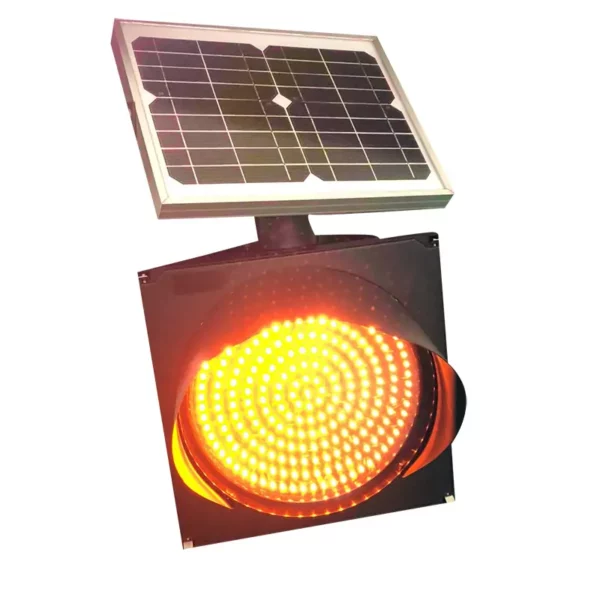Yes, there are specific applications of solar traffic signs in pedestrian zones, school areas, and crosswalks to enhance safety. These solar traffic signs are used to convey important messages to both drivers and pedestrians, helping improve safety in areas where there is a higher risk of pedestrian-vehicle interactions. Here are some common applications:
- Crosswalk Warning Signs: Solar traffic signs are placed near crosswalks to warn drivers of the presence of pedestrians. These signs often feature flashing LED lights that are activated when a pedestrian presses a button to cross the road. The flashing lights make drivers aware of the pedestrian’s intention to cross, reducing the risk of accidents.
- School Zone Speed Limit Signs: In school zones, solar traffic signs are used to indicate reduced speed limits during school hours. These signs flash when the reduced speed limit is in effect, reminding drivers to slow down and be more cautious in areas where children may be present.
- Pedestrian Crossing Signs: Solar-powered pedestrian crossing signs are employed to mark pedestrian zones and mid-block crosswalks. They enhance visibility and serve as a warning to drivers to yield to pedestrians in the crosswalk.
- School Zone Warning Signs: These signs use solar power to illuminate messages like “School Zone” or “School Crossing Ahead” to inform drivers that they are entering a school zone, where children may be present.
- Flashing Beacons: Solar traffic signs with flashing beacons are placed near pedestrian zones, crosswalks, and school areas. The flashing lights grab the attention of drivers and signal the need for caution.
- LED School Zone Speed Limits: Some solar traffic signs display the current speed limit in school zones using LED digits. These signs change the displayed speed limit during school hours, reminding drivers to adhere to the reduced limit.
- Pedestrian Activated Signs: Solar traffic signs with pedestrian-activated buttons allow pedestrians to request a signal to stop traffic and allow safe crossing. These signs provide an additional layer of safety and control for pedestrians.
- Pedestrian Safety Reminders: Solar signs with messages like “Stop for Pedestrians” or “Yield to Pedestrians” are installed to remind drivers of their legal obligation to give the right-of-way to pedestrians in crosswalks.
- Solar-Powered Speed Feedback Signs: In some areas, solar traffic signs display the real-time speed of approaching vehicles. This information encourages drivers to slow down when exceeding the speed limit near pedestrian zones.
- Nighttime Illumination: Solar-powered signs are designed to remain visible at night, providing continuous safety in low-light conditions when visibility is reduced.
These applications of solar traffic signs are specifically tailored to enhance pedestrian safety, particularly in areas where pedestrians, including schoolchildren, are vulnerable to traffic-related risks. The use of solar power ensures that these signs are energy-efficient, sustainable, China solar traffic sign and visible in various lighting conditions.
How do solar traffic signs assist in controlling traffic speed and managing congestion on roads and highways?
Solar traffic signs play a role in controlling traffic speed and managing congestion on roads and highways by conveying important messages to drivers and encouraging compliance with specific speed limits and regulations. Here’s how they assist in these aspects:
- Speed Limit Enforcement: Solar traffic signs display speed limits and other regulatory information, reminding drivers of the legal speed they should maintain in a specific area. This visual cue encourages compliance with speed restrictions.
- Dynamic Speed Display: Some solar traffic signs are equipped with radar or sensors that monitor the speed of approaching vehicles. When a driver exceeds the posted speed limit, the sign can flash or change the displayed speed, reminding the driver to slow down.
- Reduced Speed in Work Zones: In construction zones, solar traffic signs can display reduced speed limits to enhance safety for both drivers and workers. The signs also communicate the need for reduced speeds during construction activities.
- Traffic Congestion Alerts: Solar traffic signs can display messages to alert drivers about traffic congestion ahead, lane closures, or accidents. This information allows drivers to take alternate routes or slow down to adapt to the changing traffic conditions.
- Lane Management: Solar traffic signs may be used to convey lane-specific information, such as lane closures, lane shifts, or the opening of additional lanes during peak traffic hours. These signs help manage traffic flow and prevent congestion in areas with heavy traffic.
- Variable Message Signs (VMS): Some solar traffic signs are equipped with variable message displays that can convey real-time information about traffic conditions, accidents, road closures, and alternative routes. Drivers can make informed decisions based on this information.
- Hazard Alerts: In the case of hazardous conditions such as heavy rain, snow, or fog, solar traffic signs can provide alerts and recommend reduced speeds for improved safety and congestion management.
- School Zones: In school zones, solar traffic signs are used to indicate reduced speed limits during school hours. These signs help manage congestion and enhance safety by slowing down traffic in areas where children may be present.
- Intersection Management: Solar traffic signs can be used at intersections to indicate right-of-way rules, the presence of traffic signals, or the need to yield to pedestrians. This improves the flow of traffic and minimizes congestion.
- Roundabouts: In areas with roundabouts, solar traffic signs may display instructions to guide drivers on navigating the roundabout efficiently, minimizing congestion and traffic conflicts.
- Traffic Information: Solar signs with real-time traffic information can help drivers make informed choices to reduce congestion, such as suggesting alternative routes or advising on the timing of their commute.
Solar traffic signs are valuable tools in traffic management because they can adapt to changing conditions, provide real-time information, and encourage compliance with speed limits and regulations. They contribute to smoother traffic flow and enhanced road safety on highways and congested roadways.
